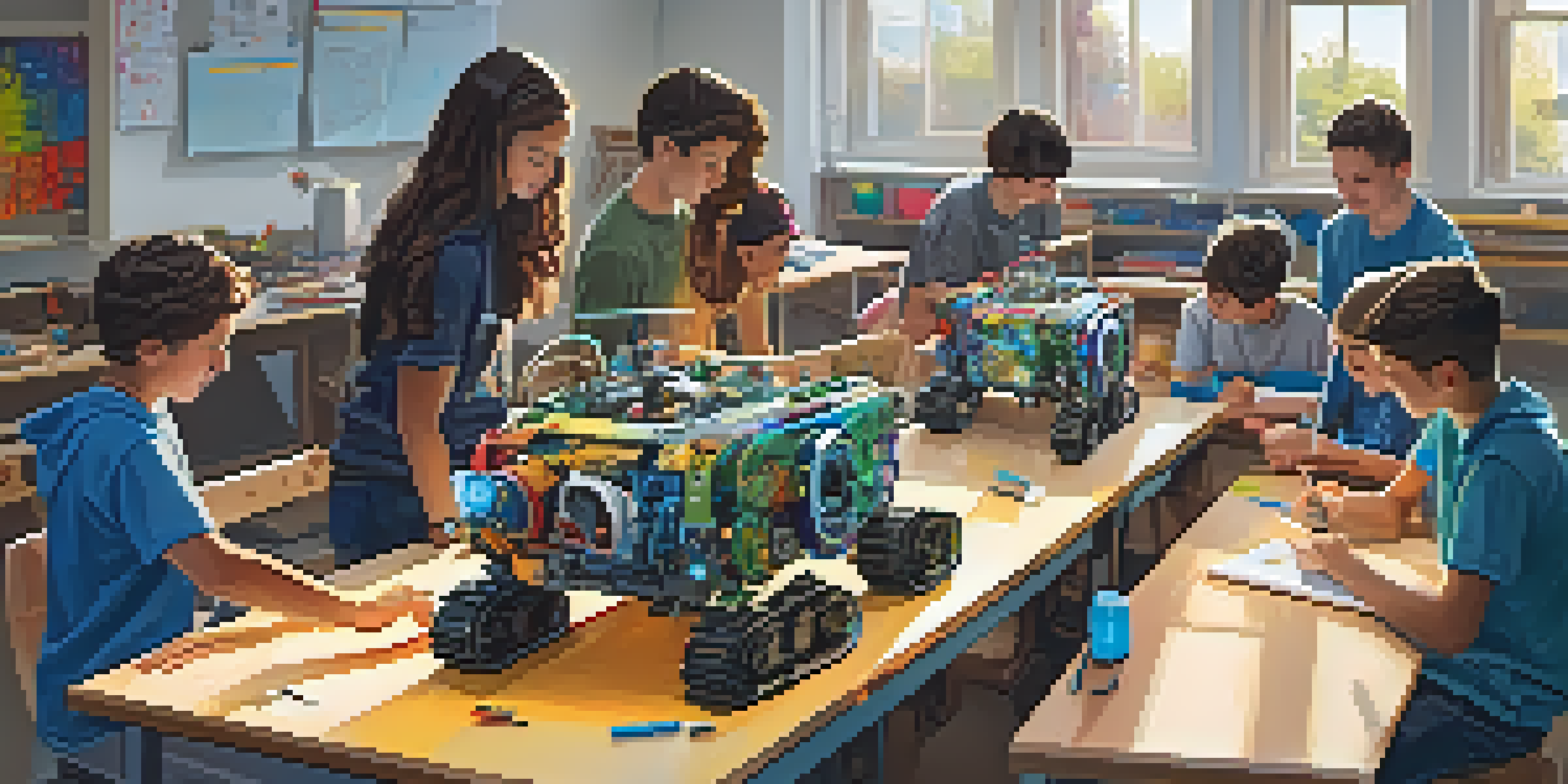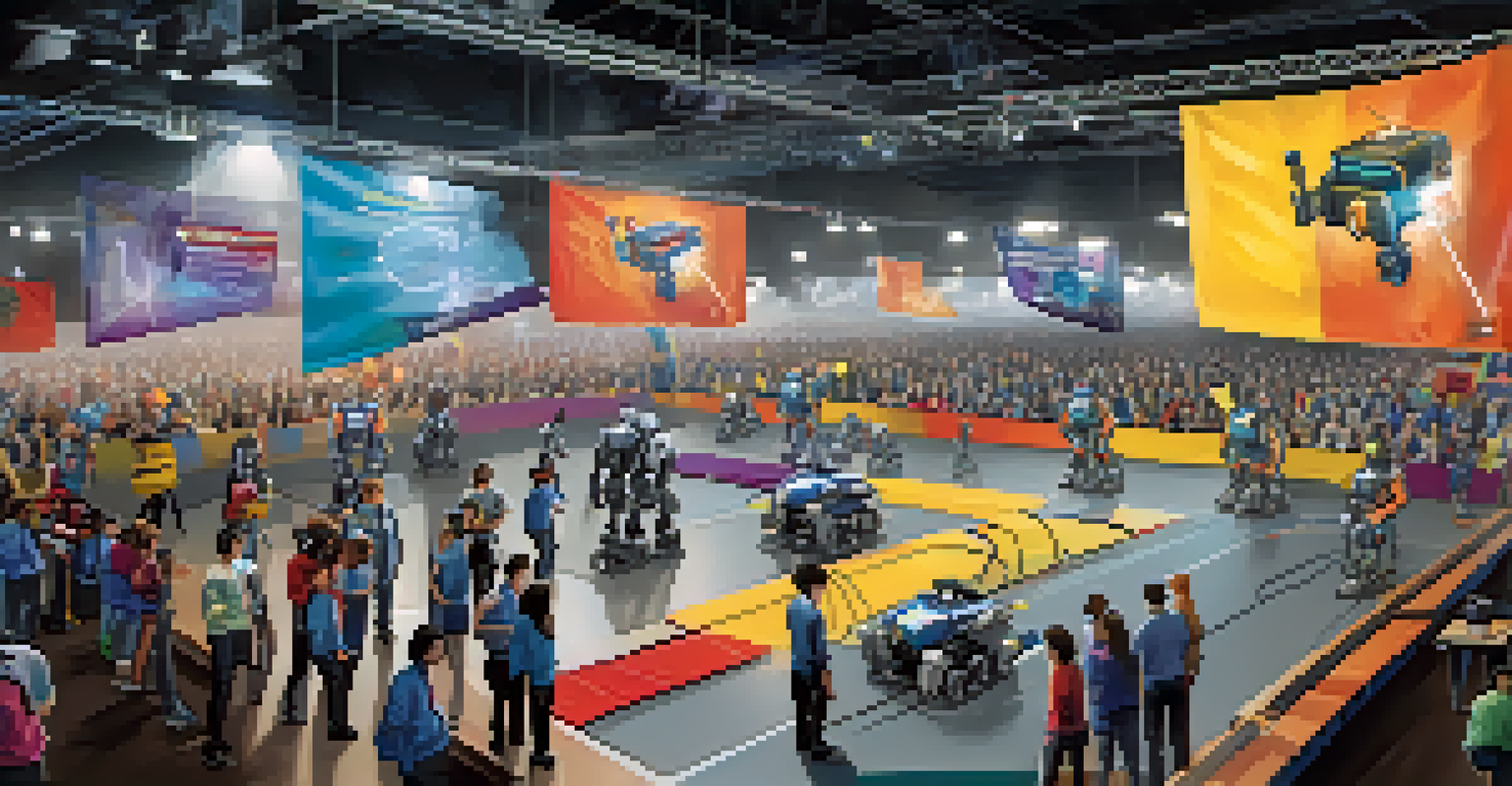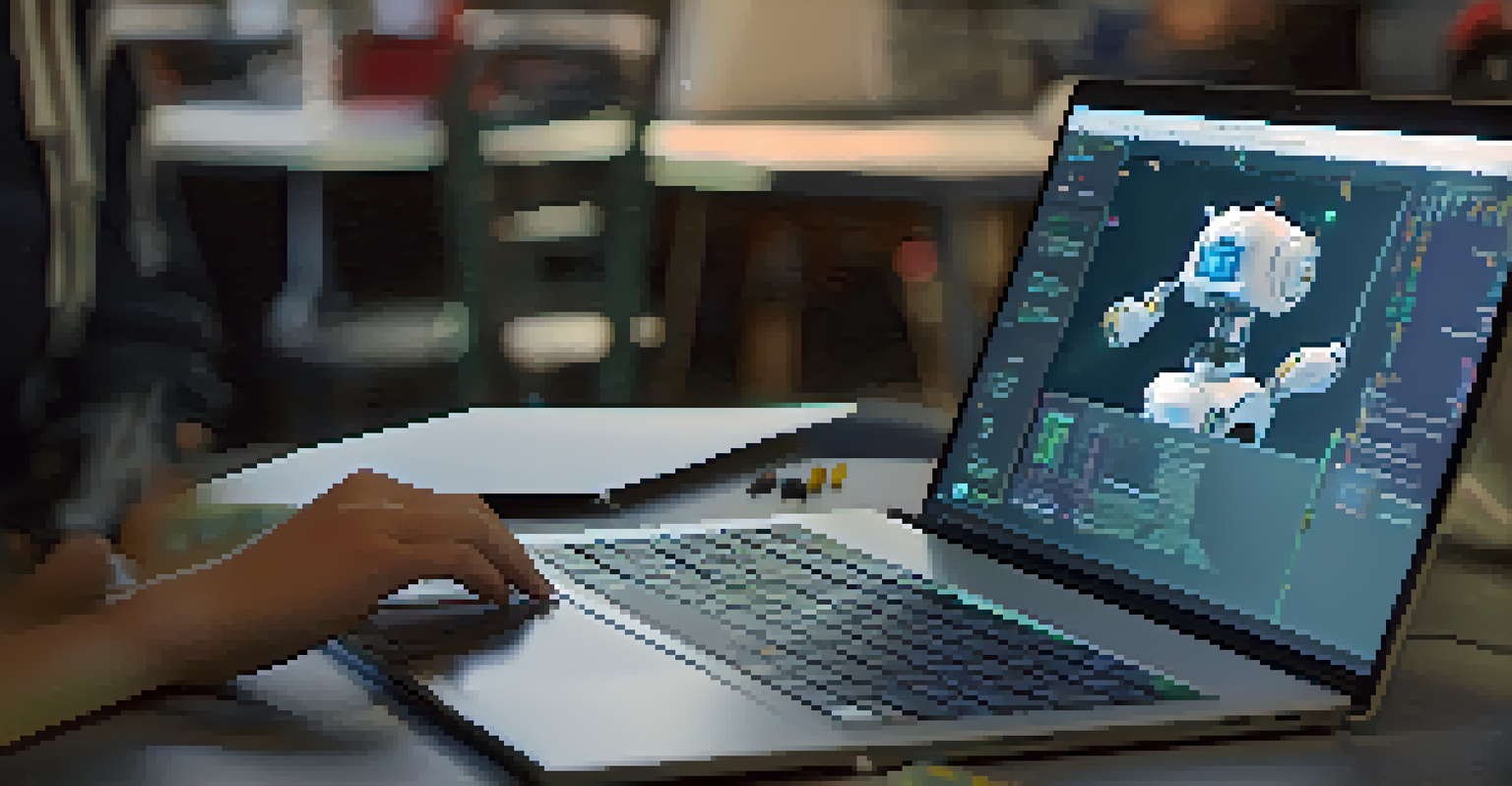How Robotics Clubs in Schools Inspire Future Engineers

The Rise of Robotics Clubs in Schools
In recent years, robotics clubs have gained popularity in schools across the globe. These clubs provide students with hands-on experience in engineering, programming, and teamwork. Many schools are now recognizing the importance of STEM education, leading to more resources and support for robotics initiatives.
Robotics is the science of the future, and there is no better way to prepare students for that future than through hands-on experience in robotics clubs.
Robotics clubs often attract a diverse group of students, from those who are naturally inclined toward math and science to those who may not have considered engineering before. This inclusivity fosters a collaborative environment where students can learn from one another's strengths. The excitement of building and programming robots creates a shared passion that encourages participation.
As students engage in these clubs, they develop critical problem-solving skills and a passion for technology. Clubs often participate in competitions, which adds an element of fun and friendly rivalry. This motivates students to push their limits and strive for improvement, setting the stage for a lifelong love of engineering.
Hands-On Learning: A Key Component
One of the most appealing aspects of robotics clubs is the hands-on learning experience they provide. Students get to work with real materials and tools, which helps solidify their understanding of theoretical concepts. This experiential learning approach makes engineering principles more tangible and relatable.

For example, when students build a robot, they must apply concepts from physics, mathematics, and computer science. This integration of subjects illustrates how interconnected these fields are in the real world. As students navigate challenges in their projects, they learn to think critically and creatively.
Robotics Clubs Boost STEM Skills
These clubs provide hands-on learning experiences that enhance engineering, programming, and teamwork skills among students.
Moreover, hands-on projects often lead to moments of discovery and excitement. Whether it's successfully coding a robot to navigate a maze or troubleshooting mechanical issues, these experiences can ignite a passion for engineering that lasts a lifetime. The joy of seeing their ideas come to life is often the spark that inspires future engineers.
Teamwork and Collaboration Skills
Robotics clubs are not just about individual achievements; they emphasize the importance of teamwork and collaboration. Students quickly learn that successful projects require contributions from everyone, fostering a sense of community. This collaborative spirit is essential in engineering, where teamwork is often critical to success.
The best way to predict the future is to create it.
Working in teams allows students to develop interpersonal skills such as communication, conflict resolution, and leadership. For instance, while one student may excel at programming, another might shine in mechanical design. By pooling their strengths, students can tackle complex challenges more effectively.
These collaborative experiences prepare students for future roles in engineering and technology fields, where working with diverse teams is the norm. The ability to collaborate and communicate effectively can set them apart in college and the workplace, making robotics clubs a valuable training ground for future careers.
Fostering Creativity and Innovation
Robotics clubs provide a unique platform for students to unleash their creativity and innovation. Unlike traditional classroom settings, where guidelines may be strict, robotics projects often encourage out-of-the-box thinking. This freedom allows students to explore their ideas and experiment with different solutions.
For example, a student might design a robot for a specific challenge, using unconventional materials or innovative programming techniques. This kind of creative problem-solving is essential in engineering, where new ideas drive progress. The ability to think creatively can lead to breakthroughs in technology and design.
Collaboration Fuels Innovation
Working in teams encourages students to combine their strengths, fostering essential skills like communication and creative problem-solving.
Additionally, the environment of a robotics club nurtures experimentation and resilience. Students learn that failure is a part of the process, and each setback can lead to valuable lessons. This mindset not only fosters innovation but also builds confidence, empowering students to pursue their engineering dreams.
Competitions: Real-World Experience
Many robotics clubs participate in competitions, providing students with invaluable real-world experience. These events challenge students to apply their skills in high-pressure situations, simulating the demands they may face in future engineering roles. Competing against peers from other schools can be both thrilling and educational.
Competitions often require students to think on their feet and adapt their strategies, mirroring the problem-solving processes used in engineering projects. For example, if a robot doesn’t perform as expected during a match, students must quickly troubleshoot and pivot their approach. This kind of dynamic learning is crucial for developing agile thinking.
Moreover, success in competitions can boost students' confidence and motivate them to pursue further studies in engineering. The recognition and accolades that come with competing can also enhance college applications, giving students a competitive edge. These experiences truly prepare them for future challenges in their educational and professional journeys.
Building a Supportive Community
Robotics clubs often create a supportive community where students can share their interests and challenges. This sense of belonging is crucial for young engineers, as it helps them feel connected and motivated. Encouragement from peers and mentors can make a significant difference in their learning experience.
Clubs frequently host workshops and events that bring together students, teachers, and industry professionals. These interactions can open doors for mentorship and networking, providing students with insights into potential career paths. This community aspect can be particularly empowering for students who may feel isolated in their interests.
Competitions Enhance Real-World Skills
Participation in robotics competitions offers students valuable experience in problem-solving under pressure, preparing them for future engineering challenges.
Furthermore, the friendships formed in robotics clubs often last beyond school, creating a network of support that extends into their professional lives. The shared experiences and challenges foster deep connections, making the journey to becoming an engineer more fulfilling and enjoyable.
Preparing for Future Engineering Careers
Ultimately, robotics clubs serve as a springboard for students aspiring to pursue engineering careers. The skills and experiences gained through participation are directly applicable to various fields, from robotics to software development. Students leave these clubs with a solid foundation of knowledge and practical skills.
Many students find that their involvement in robotics influences their college and career choices. The passion ignited in these clubs often leads them to pursue degrees in engineering, computer science, or related fields. Additionally, the technical expertise gained can make them more attractive candidates for internships and job opportunities.

By nurturing a love for engineering early on, robotics clubs play a crucial role in shaping the future of the industry. As these young engineers enter the workforce, they bring fresh ideas and perspectives that can drive innovation and progress in technology.